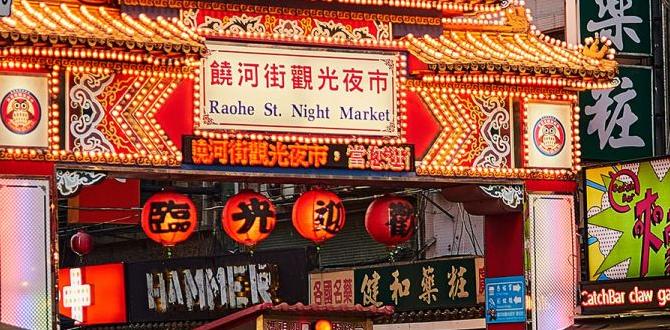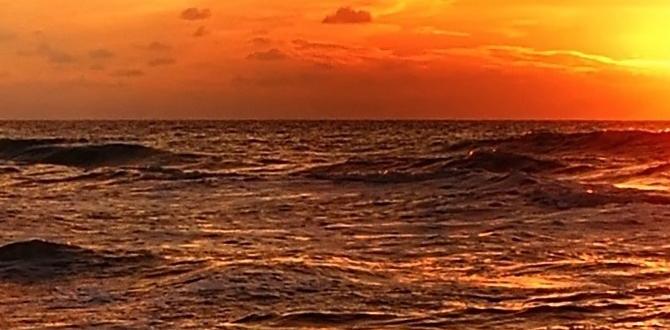Blue Mountains luxury on a budget is achievable by strategically planning accommodations, dining, and activities to maximize experiences without overspending. Focus on self-catering, free natural attractions, and off-peak travel for significant savings.
Dreaming of the majestic Blue Mountains but worrying about the cost? You’re not alone! Many imagine a luxurious mountain getaway as an expensive indulgence. But what if I told you that you can experience the breathtaking beauty, fresh air, and tranquil charm of this iconic Australian destination without breaking the bank? It’s entirely possible!
With a little smart planning, you can enjoy some of that coveted “luxury” feel on a budget that works for you. Ready to discover how to make your Blue Mountains escape both stunning and affordable? Let’s dive into some essential strategies!
Planning Your Budget-Friendly Blue Mountains Escape
The secret to experiencing Blue Mountains luxury on a budget lies in smart planning. It’s about making conscious choices that give you more bang for your buck. Think of it as curating your own bespoke, affordable adventure. This involves looking at the core components of any trip: where you’ll stay, what you’ll eat, and how you’ll spend your days.
Choosing Affordable Yet Comfortable Accommodation
Accommodation is often the biggest slice of the travel pie. For the Blue Mountains, you have several excellent budget-friendly options that don’t skimp on comfort or charm.
1. Cozy Cottages and Self-Catering Stays
One of the best ways to enjoy a touch of luxury on a budget is to opt for self-catering. Renting a cottage, cabin, or even a private room through platforms like Airbnb or Stayz can be significantly cheaper than hotels, especially for longer stays or groups. You gain a private space, often with a kitchen, living area, and sometimes even a fireplace – all hallmarks of a cozy mountain retreat.
- Pros: Cost-effective, more space, kitchen facilities for saving on meals, homey atmosphere.
- Cons: Requires self-catering, may lack hotel amenities like daily housekeeping or room service.
2. Holiday Parks and Cabins
Many holiday parks in the Blue Mountains offer cabin accommodation. These are typically well-equipped and provide a comfortable base. They often have shared facilities like BBQ areas and playgrounds, which can be great for families. Prices are usually very competitive, offering good value for money.
3. Boutique Motels and Guesthouses
Look for smaller, independent motels or guesthouses. While not always “budget” in the strictest sense, they often provide a more personal touch and better value than larger hotel chains. Many have been updated and offer comfortable, clean rooms with friendly service. Booking directly with these establishments can sometimes yield better rates.
4. Consider Off-Peak Timing
The Golden Rule of budget travel: avoid peak season! School holidays, long weekends, and summer can see accommodation prices soar. Visiting mid-week or during the shoulder seasons (like autumn or spring, excluding major holidays) can lead to substantial savings. Plus, you’ll often find the attractions less crowded, adding to the sense of exclusive luxury.
Smart Dining: Savoring Flavors Without the Splurge
Eating out for every meal can quickly drain your budget. Thankfully, the Blue Mountains offers delicious ways to dine affordably.
1. Embrace the Picnic Culture
The Blue Mountains are bursting with stunning picnic spots. Pack your own gourmet delights from local bakeries and grocers. Think fresh bread, local cheeses, artisanal meats, and seasonal fruits. It’s an incredibly romantic and picturesque way to enjoy lunch with world-class views, for a fraction of the cost of a restaurant meal. Many supermarkets in Katoomba and Leura offer good quality picnic supplies.
2. Utilize Your Self-Catering Kitchen
If you’ve chosen self-catering, meals become an adventure. Explore local markets for fresh produce. Cooking a hearty dinner in your own cozy space, perhaps by a fireplace, is a quintessentially luxurious yet budget-friendly mountain experience. Think warming stews in winter or fresh salads in summer.
3. Affordable Cafes and Bakeries
Many charming cafes and bakeries in towns like Katoomba, Leura, and Wentworth Falls offer delicious and reasonably priced meals, sandwiches, pies, and pastries. They are perfect for a casual breakfast or lunch. Look out for local favorites serving fresh, quality food.
4. Happy Hour and Early Bird Specials
Some restaurants offer happy hour deals on drinks and snacks, or early bird dinner specials. Check local listings or ask your accommodation provider for recommendations. Dining a little earlier can sometimes secure discounted meals.
Free and Low-Cost Activities: Nature’s Best Offerings
The biggest draw of the Blue Mountains is its spectacular natural beauty, and most of it is completely free to enjoy!
1. Hiking and Bushwalking
The Blue Mountains National Park, a UNESCO World Heritage Area, is crisscrossed with incredible walking trails for all fitness levels. From gentle boardwalks to challenging climbs, there’s something for everyone. Popular, easily accessible walks include the Prince Henry Cliff Walk (offering stunning views of the Three Sisters and the Jamison Valley), the walk to Wentworth Falls, and short strolls around Echo Point.
The NSW National Parks and Wildlife Service website is an invaluable resource for detailed information on trails, their difficulty, and current conditions.
2. Scenic Lookouts Galore
Many of the most iconic views are accessible from dedicated lookouts, requiring no more than a short walk from a car park. Echo Point (for the Three Sisters), Govetts Leap, Sublime Point, and Cahill’s Lookout offer breathtaking panoramas. Pack your camera; the ‘Instagrammable’ moments are aplenty and cost nothing!
3. Exploring Charming Villages
Simply wandering through the picturesque towns of Leura, Katoomba, and Wentworth Falls is an experience in itself. Admire the charming Federation and Queen Anne architecture, browse unique boutiques (window shopping is free!), and soak in the atmosphere. Leura Mall, in particular, is famous for its colorful gardens and boutique shops.
4. Waterfalls and Natural Pools
Beyond the famous Wentworth Falls, the region boasts numerous other beautiful waterfalls and natural swimming spots. Check park alerts for accessibility and safety. Always be aware of your surroundings and conditions, especially after rain.
5. Visit the Blue Mountains Cultural Centre (Katoomba)
While some cultural attractions have entry fees, the Blue Mountains Cultural Centre in Katoomba often has free exhibitions and galleries. It’s a great way to engage with local art and history, providing a different facet to your mountain experience.
Budgeting Your Blue Mountains Trip: A Sample Itinerary
Let’s put this into practice with a hypothetical long weekend geared towards luxury on a budget. This plan assumes you are traveling as a couple or small group for a Friday to Sunday trip in the shoulder season.
Accommodation Strategy:
Book a well-reviewed cottage or Airbnb with a kitchen in the Katoomba or Leura area, aiming for around $150-$200 per night. This totals $450-$600 for three nights.
Food Strategy:
- Friday Dinner: Pick up supplies from a local supermarket (e.g., Coles or Woolworths in Katoomba) and have a cozy dinner in your accommodation. Budget: $50.
- Saturday Breakfast: Enjoy breakfast at your self-catering spot. Budget: $20.
- Saturday Lunch: Pack a gourmet picnic to enjoy at a scenic lookout. Budget: $40.
- Saturday Dinner: Explore a casual, well-regarded local cafe or pub for dinner. Budget: $80-$100.
- Sunday Breakfast: Self-cater again. Budget: $20.
- Sunday Lunch: Grab a quick, delicious pie or sandwich from a local bakery before heading home. Budget: $30.
Total Food Budget: Approximately $240-$260.
Activities Strategy:
- Friday: Arrive, settle in, and take a gentle stroll around your local village. Enjoy the sunset from a nearby lookout. Cost: Free.
- Saturday: Full day of bushwalking. Start with the Prince Henry Cliff Walk from Echo Point to admire the Three Sisters, then explore the Leura Cascades and Prince Henry Forest Park walks. Pack your picnic lunch. Cost: Free.
- Sunday: Drive to Wentworth Falls, enjoy the views from Jamison Lookout and Wentworth Falls Lookout, and perhaps do a short walk down to one of the lower lookouts (e.g., Fletchers Lookout). Visit the Blue Mountains Cultural Centre in the afternoon. Cost: Free (plus any small fee for special exhibitions if desired).
Estimated Activity & Transport Costs (excluding fuel for personal vehicle): $0 (assuming free activities and personal transport).
Sample Budget Breakdown (3 Day/2 Night Trip):
| Category | Estimated Cost (Low) | Estimated Cost (High) |
|---|---|---|
| Accommodation (2 nights) | $300 | $400 |
| Food & Groceries | $240 | $260 |
| Activities & Parking | $0 | $20 (e.g., for specific park entry if applicable, though most are free) |
| Fuel/Transport (example) | $100 | $150 |
| Total Estimated Budget | $640 | $830 |
This table illustrates how achievable “luxury on a budget” can be, focusing on experiences and natural beauty rather than high-end services.
Maximizing Comfort and Convenience
Even on a budget, comfort and convenience are key to a stress-free trip. Here’s how to ensure you feel well-cared for:
Packing Smart for Comfort
Don’t let discomfort spoil your adventure. Appropriate packing is essential.
- Footwear: Comfortable walking shoes are non-negotiable. If you plan on longer hikes, consider sturdy hiking boots.
- Layered Clothing: The Blue Mountains weather can change quickly. Pack layers – a base layer, a warm mid-layer (fleece or jumper), and a waterproof/windproof outer shell.
- Sun Protection: Sunscreen, a wide-brimmed hat, and sunglasses are vital, even on cloudy days.
- Reusable Water Bottles: Stay hydrated without constantly buying bottled water. Many lookouts and villages have water fountains.
- Snacks: Keep energy levels up with easy-to-carry snacks like nuts, dried fruit, or energy bars.
Considering Essential Needs for All Travelers
For travelers who need extra personal care items, planning ahead ensures comfort and dignity. For example, if you or a family member requires adult or child diapers, ensuring you have an adequate supply that is comfortable and reliable is crucial for enjoying activities without worry.
- Pre-purchase and Pack: It’s often easier and more cost-effective to buy your required supplies before you leave home. Pack them discreetly and securely in your luggage.
- Discreet Disposal: Be mindful of waste disposal in national parks. Carry a small sealable bag for used items and dispose of them appropriately in town bins, not in nature.
- Comfortable Attire: Ensure clothing choices accommodate any personal care needs comfortably and discreetly.
Planning for these needs is just another part of smart travel preparation, allowing everyone to focus on the beauty and enjoyment of the Blue Mountains.
When to Visit for the Best Budget and Experience
Timing your visit can significantly impact both your budget and the quality of your experience.
Shoulder Seasons: Spring (September-November) & Autumn (March-May)
These are arguably the best times to visit for budget-conscious travelers seeking a balance of good weather and fewer crowds.
- Spring: Witness the explosion of wildflowers and enjoy mild temperatures perfect for walking. Accommodation prices are generally lower than summer.
- Autumn: The turning of the leaves brings a spectacular display of reds, oranges, and yellows to parts of the mountains. The air is crisp and clear, ideal for hiking.
Winter (June-August)
While colder, winter can be surprisingly magical and very affordable. Expect frosty mornings, cozy evenings by the fire, and potentially snow on the highest peaks. Accommodation can be at its cheapest during this period, excluding school holidays. Just pack warm!
Summer (December-February) & Peak Times (School Holidays, Long Weekends)
These are the most expensive and crowded times. While the weather is warm and perfect for outdoor activities, be prepared for higher prices and more competition for accommodation and parking at popular spots. If you must travel during these times, book very far in advance and be even more diligent with budget planning.
Conclusion
Experiencing the grandeur and serenity of the Blue Mountains doesn’t have to be an extravagant affair. By embracing self-catering, prioritizing free natural attractions, and timing your visit wisely, you can craft a truly memorable and luxurious getaway that respects your budget.
The majestic vistas, invigorating bushwalks, and the quiet charm of the mountain villages are the true treasures here, and they are accessible to everyone. So, pack smart, plan ahead, and get ready to discover the magic of Blue Mountains luxury on a budget – your essential guide has set you on the right path!
Frequently Asked Questions
Q1: Is it possible to see the Three Sisters without paying for an attraction?
A: Absolutely! The iconic Three Sisters are best viewed from Echo Point lookout in Katoomba, which is freely accessible to the public. You can also see them from various points along the Prince Henry Cliff Walk.
Q2: What are the cheapest towns to stay in the Blue Mountains?
A: Generally, the larger towns like Katoomba offer more budget-friendly accommodation and dining options due to a wider range of choices, including caravan parks and motels, compared to more boutique villages like Leura or Blackheath. However, consider transport costs if staying further out.
Q3: Are there any free guided walks available?
A: While not always consistently available, some local tourism operators or national park initiatives may offer occasional free guided walks. It’s best to check the NSW National Parks website or local visitor information centers for current offerings.
Q4: Can I bring my own food into the national parks?
A: Yes, you are highly encouraged to bring your own food and drinks into the national parks. This is a fantastic way to save money and reduces waste. Just ensure you take all your rubbish with you.
Q5: What’s the best way to get around the Blue Mountains on a budget?
A: If you don’t have your own car, the train service from Sydney to Katoomba is very affordable. Once in the mountains, local buses connect major towns and some attractions. However, for maximum flexibility and to reach more remote trailheads or lookouts, a car is generally most convenient, though hiring one can add to costs.
Q6: How can I find affordable accommodation that still feels luxurious?
A: Look for self-catering cottages or cabins with amenities like a fireplace, spa bath, or a beautiful view. These features provide a sense of luxury without the high price tag of hotels offering daily services. Reading reviews carefully for mentions of ‘cozy’, ‘charming’, or ‘well-appointed’ can help.





